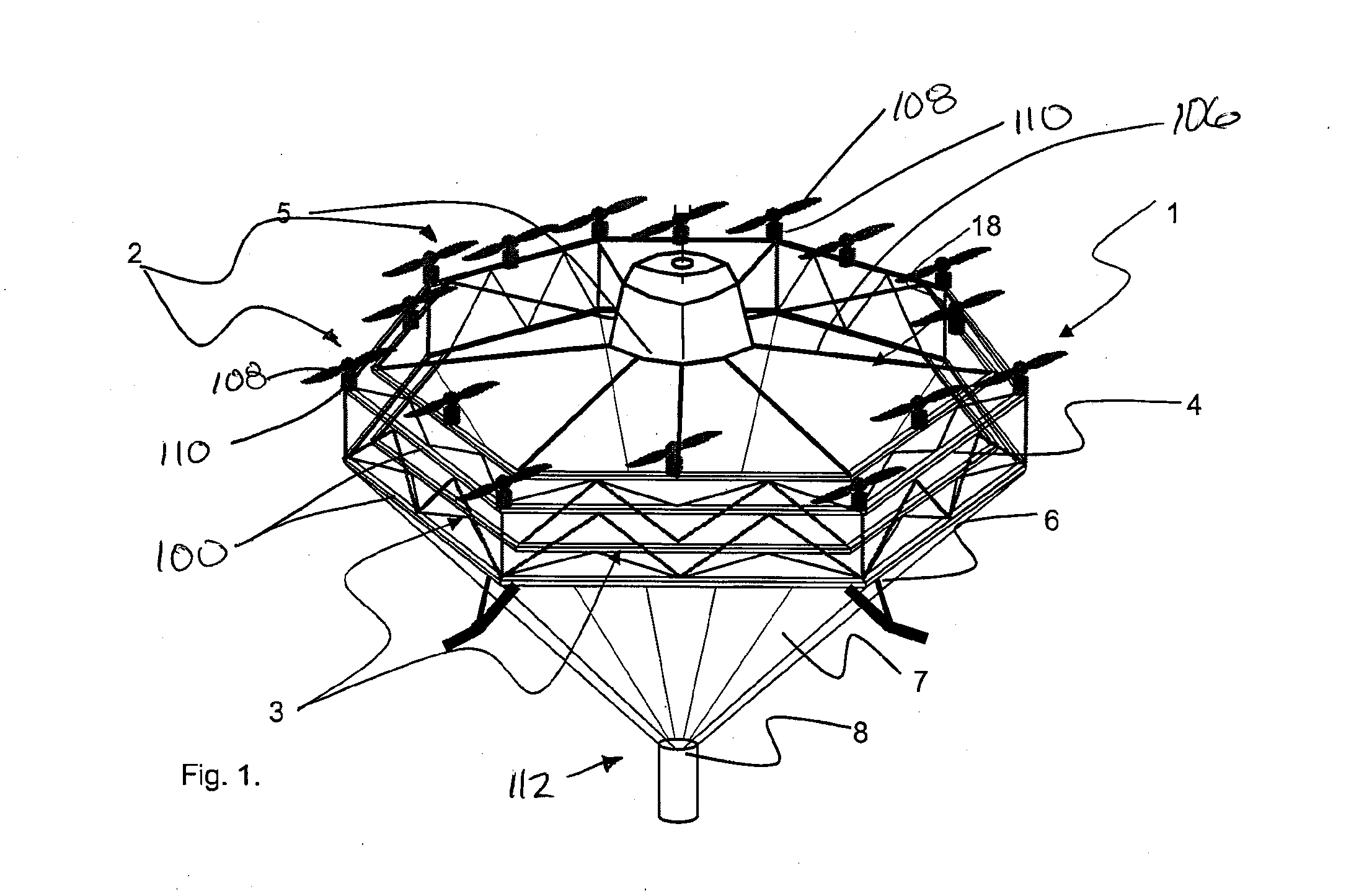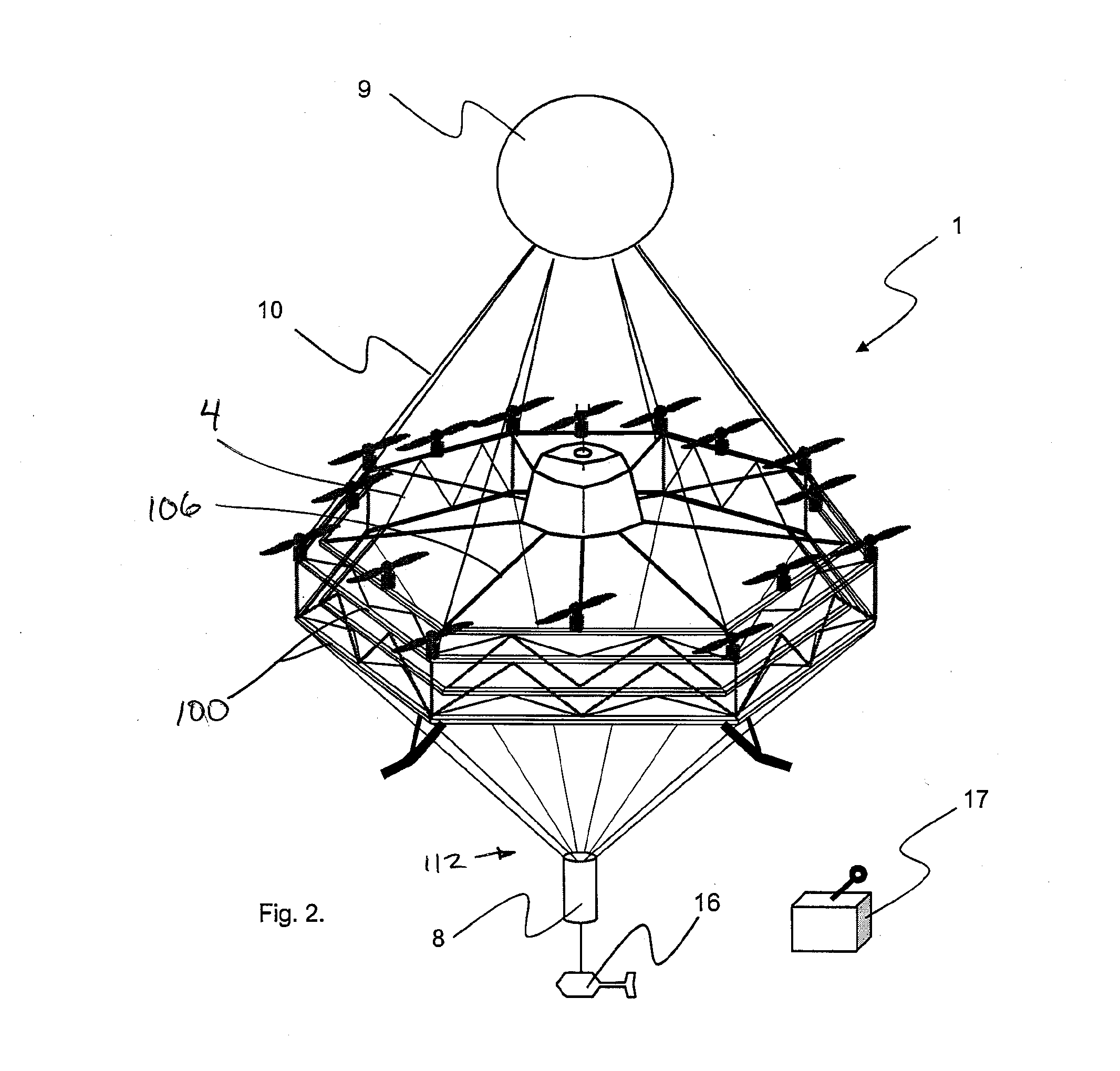Airborne Geophysical Survey System
- Summary
- Abstract
- Description
- Claims
- Application Information
AI Technical Summary
Benefits of technology
Problems solved by technology
Method used
Image
Examples
Embodiment Construction
[0054]The present invention comprises an airborne (frequency or time domain) EM survey system 1. The survey system 1 includes a multi-rotor, drone 18, a series of transmitting coils 3, transmitter and receiver assembly in an onboard console 5, an EM receiver sensor 8 and a magnetometer sensor 16. FIG. 1 is a perspective view of the apparatus of the present invention in the airborne, operational mode. In this embodiment the high density receiver sensor 8 is suspended centrally beneath the drone 18 by means of cables 7 attached, equidistantly from the outer, lower edge of the drone frame 3, thereby creating a pendulum effect for stability of the aircraft during flight.
[0055]The survey system 1 is propelled and maneuvered by increasing or decreasing the speed of the rotors 2 independently. This maneuvering is accomplished by means of flight software algorithms. The drone 18 is an unmanned air vehicle (UAV) with flight path being managed on the ground from a remote control unit 17.
[0056...
PUM
 Login to View More
Login to View More Abstract
Description
Claims
Application Information
 Login to View More
Login to View More - R&D
- Intellectual Property
- Life Sciences
- Materials
- Tech Scout
- Unparalleled Data Quality
- Higher Quality Content
- 60% Fewer Hallucinations
Browse by: Latest US Patents, China's latest patents, Technical Efficacy Thesaurus, Application Domain, Technology Topic, Popular Technical Reports.
© 2025 PatSnap. All rights reserved.Legal|Privacy policy|Modern Slavery Act Transparency Statement|Sitemap|About US| Contact US: help@patsnap.com



